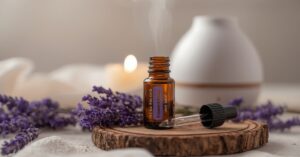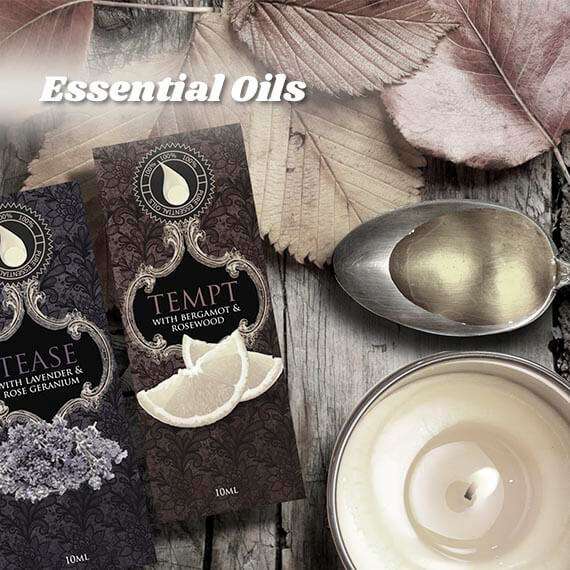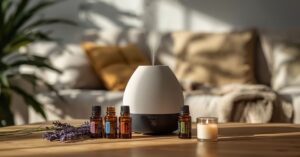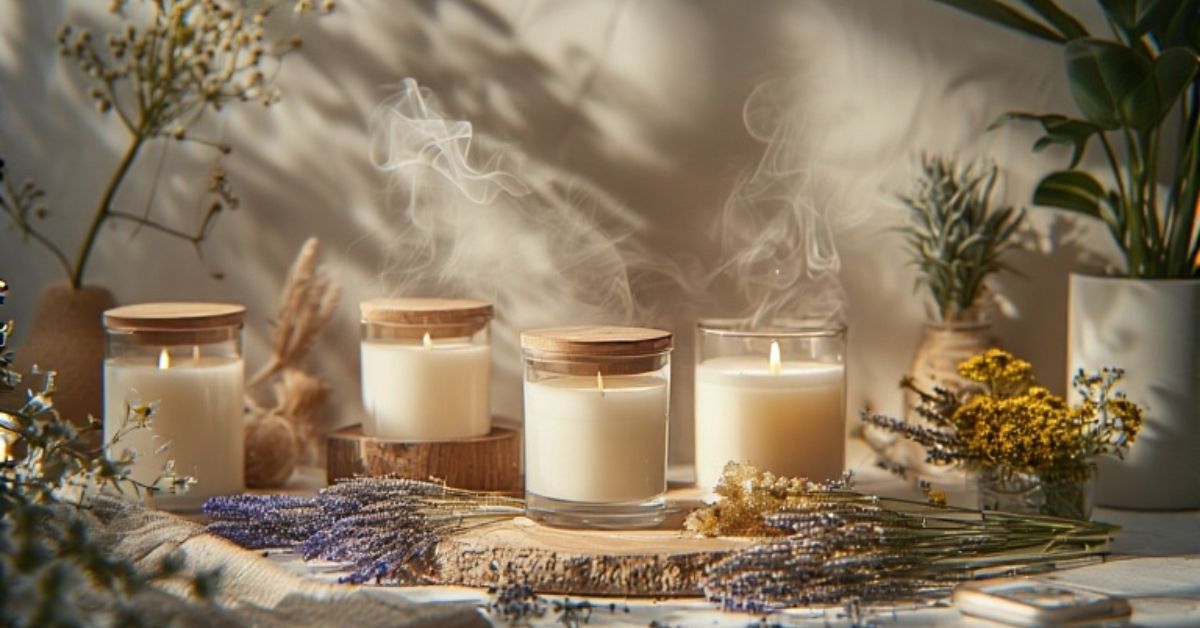
Do Aromatherapy Candles Really Work for Stress and Anxiety?
The flickering flame of a candle has captivated humans for centuries, but when essential oils enter the equation, something magical happens. Aromatherapy candles promise more than just ambient lighting—they claim to ease stress, calm anxiety, and transform your mental state through the power of scent. But do these fragrant flames actually deliver on their therapeutic promises, or are we simply lighting money on fire?
Research suggests there’s genuine science behind the soothing power of aromatherapy candles. Studies have shown that certain essential oils can trigger neurological responses that reduce cortisol levels, lower blood pressure, and activate the parasympathetic nervous system—your body’s natural relaxation response. However, not all aromatherapy candles are created equal, and understanding what makes them effective is crucial for anyone seeking genuine stress relief.
This comprehensive guide explores the science behind aromatherapy candles, examines which essential oils truly work for stress and anxiety, and provides practical advice for choosing and using these therapeutic tools effectively. Whether you’re a skeptic seeking evidence or a believer looking to optimise your aromatherapy practice, you’ll discover everything you need to know about harnessing the healing power of scented candles.
The Science Behind Aromatherapy and Stress Relief
When you light an aromatherapy candle, you’re activating one of your body’s most direct pathways to the brain. Unlike other senses that must travel through various neural networks, scent molecules travel directly from your olfactory receptors to the limbic system—the brain’s emotional control centre. This explains why certain fragrances can instantly transport you to childhood memories or immediately shift your mood.
The limbic system includes the hippocampus (memory centre) and amygdala (fear and stress response centre), which is why aromatherapy candles can be so effective for managing anxiety and stress. When you inhale lavender, for example, specific compounds called linalool and linalyl acetate interact with neurotransmitter systems in your brain, promoting the release of calming chemicals like serotonin and GABA.
Research published in the International Journal of Neuroscience found that participants who inhaled lavender essential oil showed significant decreases in cortisol levels and reported feeling more relaxed within just 15 minutes. Similarly, studies on bergamot oil have demonstrated its ability to reduce both psychological stress and physiological markers of anxiety, including heart rate and blood pressure.
The effectiveness of aromatherapy candles isn’t just psychological—it’s measurably physiological. Brain imaging studies have shown that certain essential oils can actually alter brainwave patterns, shifting from the high-frequency beta waves associated with stress to the slower alpha waves linked with relaxation and meditation.
Essential Oils That Actually Work for Anxiety and Stress
Not all essential oils are created equal when it comes to stress relief. While the aromatherapy industry is flooded with claims about various scents, scientific research has identified specific oils with proven anxiolytic (anti-anxiety) properties.
Lavender remains the gold standard for stress relief aromatherapy candles. Multiple clinical trials have confirmed its effectiveness, with one study showing that lavender aromatherapy reduced anxiety scores by 45% in dental patients. The key compounds responsible are linalool and linalyl acetate, which have sedative and anxiolytic effects.
Bergamot oil, derived from the citrus fruit, contains limonene and linalyl acetate that help regulate mood and reduce stress hormones. Research has shown that bergamot aromatherapy can lower cortisol levels by up to 17% while simultaneously improving mood and reducing fatigue.
Chamomile has been used for centuries as a calming agent, and modern research supports its effectiveness. The compound apigenin in chamomile binds to benzodiazepine receptors in the brain, producing mild sedative effects without the side effects of pharmaceutical alternatives.
Ylang-ylang essential oil has demonstrated remarkable ability to reduce both psychological and physiological stress markers. Studies show it can lower blood pressure, reduce cortisol levels, and improve feelings of calm and relaxation within minutes of inhalation.
Frankincense contains compounds that can cross the blood-brain barrier and influence the limbic system directly. Research indicates it may help regulate emotions and reduce anxiety by affecting the production of neurotransmitters like serotonin and dopamine.
When choosing aromatherapy candles for stress relief, look for products that prominently feature these scientifically-backed essential oils rather than generic “relaxing” blends that may contain ineffective or synthetic fragrances.
Natural vs Synthetic: Why Ingredients Matter
The effectiveness of aromatherapy candles depends entirely on their ingredients, and the difference between natural essential oils and synthetic fragrances is crucial for therapeutic benefits. While synthetic fragrances might smell pleasant, they lack the complex molecular structure that gives natural essential oils their therapeutic properties.
Natural essential oils contain hundreds of chemical compounds that work synergistically to produce therapeutic effects. Lavender oil, for instance, contains over 100 different compounds beyond just linalool and linalyl acetate. This complexity is impossible to replicate synthetically, which is why artificial lavender scent might smell similar but won’t provide the same stress-relieving benefits.
The base wax also significantly impacts both safety and effectiveness. Soy wax aromatherapy candles burn cleaner and at lower temperatures than paraffin alternatives, allowing essential oils to disperse more effectively without being destroyed by excessive heat. Beeswax aromatherapy candles are another excellent natural option, as they actually purify the air while burning and have the longest burn time.
Many commercial aromatherapy candles contain only trace amounts of essential oils, relying primarily on synthetic fragrances for scent. These products may smell appealing but won’t provide therapeutic benefits. When shopping for aromatherapy candles, look for products that clearly state the percentage of essential oils used and avoid those listing “fragrance” or “parfum” as primary ingredients.
The quality of essential oils also varies dramatically. Therapeutic-grade oils are steam-distilled or cold-pressed from plants grown without pesticides, while lower-grade oils may be extracted using chemical solvents that leave residues. For stress relief purposes, investing in high-quality, natural aromatherapy candles with genuine essential oils is essential for achieving desired therapeutic effects.
How to Choose the Right Aromatherapy Candles
Selecting effective aromatherapy candles for stress and anxiety relief requires understanding several key factors beyond just scent preference. The concentration of essential oils, quality of ingredients, and proper manufacturing methods all influence therapeutic effectiveness.
Essential Oil Concentration is crucial for therapeutic benefits. Quality aromatherapy candles should contain at least 6-8% essential oils by weight. Many commercial candles contain less than 2%, which provides fragrance but minimal therapeutic value. Look for manufacturers who clearly state their essential oil percentages or provide this information upon request.
Wax Type significantly impacts both safety and effectiveness. Soy wax aromatherapy candles offer the best combination of clean burning and scent throw, while beeswax aromatherapy candles provide the longest burn time and natural air purification. Avoid paraffin wax candles, which can release potentially harmful chemicals when burned and may interfere with the therapeutic properties of essential oils.
Wick Quality affects how evenly the candle burns and how well it disperses aromatherapy oils. Cotton wicks are ideal, while wooden wicks can add a pleasant crackling sound but may not provide as consistent a burn. Lead wicks should always be avoided for health reasons.
Third-Party Testing and certifications can help verify quality claims. Look for aromatherapy candles that have been tested for purity and potency, or those certified by recognised aromatherapy organisations.
Size and Burn Time considerations are practical but important. Larger candles generally provide more consistent scent throw and better value, while smaller aromatherapy tea light candles or votives are perfect for targeted use in specific areas.
When purchasing aromatherapy candles online, read customer reviews carefully, paying attention to comments about scent strength, burn quality, and therapeutic effectiveness rather than just appearance or packaging.
Using Aromatherapy Candles Effectively for Maximum Benefits
Proper use of aromatherapy candles can significantly enhance their stress-relieving benefits. Understanding optimal burning practices, timing, and environmental factors ensures you get the maximum therapeutic value from your investment.
Room Size and Ventilation play crucial roles in effectiveness. For stress relief, you want enough essential oil vapour to activate your olfactory system without overwhelming the space. A single medium-sized aromatherapy candle works well for rooms up to 150 square feet, while larger spaces may require multiple candles or larger sizes. Ensure adequate but not excessive ventilation—you want air circulation without drafts that disperse the therapeutic vapours too quickly.
Burning Duration matters for both effectiveness and safety. Allow aromatherapy candles to burn for at least 30 minutes to achieve proper scent throw, but never exceed 4 hours at a time. For stress relief sessions, 1-2 hours of burning typically provides optimal benefits without sensory fatigue.
Timing and Routine can enhance therapeutic effects. Light your aromatherapy stress relief candle 15-20 minutes before you plan to relax, allowing the essential oils to properly disperse. Many people find evening use most beneficial, as the calming effects can improve sleep quality.
Combining with Other Relaxation Practices amplifies benefits. Use aromatherapy candles during meditation, yoga, reading, or bath time to create a multi-sensory relaxation experience. The visual element of flickering flames combined with therapeutic scents can deepen relaxation responses.
Candle Care ensures consistent performance. Always trim wicks to 1/4 inch before lighting to prevent smoking and ensure even burning. Allow the wax pool to reach the edges during the first burn to prevent tunnelling, which reduces both scent throw and burn time.
Safety Considerations are paramount when using any open flame for extended periods. Never leave burning candles unattended, keep them away from drafts and flammable materials, and consider using aromatherapy candle holders or diffusers for added safety.
The Role of Environment in Aromatherapy Effectiveness
Creating the optimal environment for aromatherapy candles enhances their stress-relieving properties significantly. The physical space, lighting conditions, and complementary elements all contribute to the overall therapeutic experience.
Decluttered Space allows your mind to relax more fully while the aromatherapy candles work their magic. Visual chaos can counteract the calming effects of even the best lavender aromatherapy candles, so consider tidying your relaxation space before lighting your candles.
Lighting Balance enhances the psychological benefits of aromatherapy candles. Dim ambient lighting allows the candle flames to create a soothing focal point while still providing enough light for safety. Avoid bright overhead lights or electronic screens, which can interfere with the relaxation response.
Temperature Control affects how well essential oils disperse from aromatherapy candles. Slightly cooler rooms (around 18-21°C) allow for better scent distribution, while overly warm spaces can make the atmosphere feel heavy and counteract stress relief benefits.
Sound Environment complements aromatherapy practices. Soft instrumental music, nature sounds, or complete silence work well with aromatherapy candle sessions. Avoid stimulating audio content that might counteract the calming effects of your essential oils.
Complementary Scents should be considered if you use other products in your relaxation space. Avoid competing fragrances from air fresheners, perfumes, or cleaning products that might interfere with your aromatherapy candles’ therapeutic effects.
Personal Comfort Items like soft cushions, warm blankets, or comfortable seating enhance the overall relaxation experience while your aromatherapy candles create the therapeutic atmosphere.
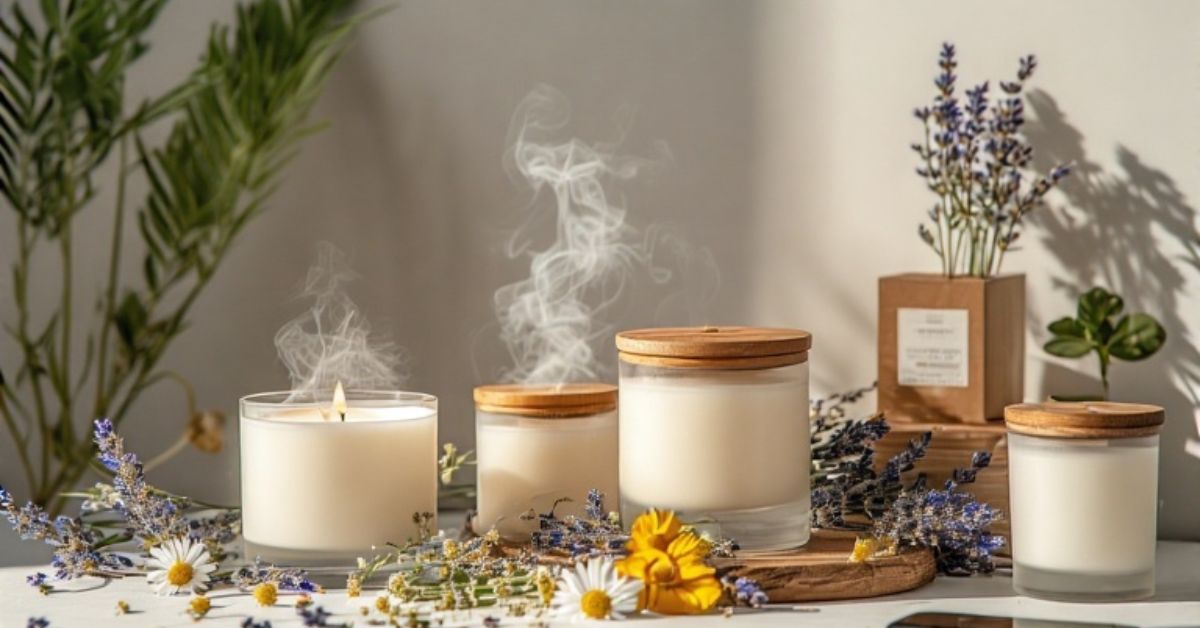
Common Myths and Misconceptions About Aromatherapy Candles
Despite growing scientific support for aromatherapy, several misconceptions persist about aromatherapy candles and their effectiveness for stress relief. Understanding these myths helps consumers make better choices and set realistic expectations.
Myth: All Scented Candles Provide Aromatherapy Benefits
Reality: Only candles containing genuine essential oils offer therapeutic benefits. Synthetic fragrances may smell pleasant but lack the complex molecular structures that interact with your nervous system to reduce stress and anxiety.
Myth: Stronger Scent Means Better Therapeutic Effects
Reality: Overwhelming fragrance can actually increase stress and cause headaches. Effective aromatherapy candles provide subtle, consistent scent that doesn’t dominate the environment. Quality matters more than intensity.
Myth: Any Lavender Candle Will Help with Anxiety
Reality: The therapeutic effectiveness depends on the concentration and quality of lavender essential oil used. Many commercial “lavender” candles contain minimal actual lavender oil, relying instead on synthetic lavender fragrance.
Myth: Aromatherapy Candles Work Instantly
Reality: While some people notice immediate effects, optimal benefits typically develop over 15-30 minutes as essential oil compounds accumulate in your system and trigger neurological responses.
Myth: More Expensive Always Means Better Quality
Reality: While quality aromatherapy candles typically cost more than synthetic alternatives, price alone doesn’t guarantee effectiveness. Focus on ingredient quality, essential oil concentration, and manufacturing practices rather than just price point.
Myth: Aromatherapy Candles Are Just Placebo Effect
Reality: Numerous peer-reviewed studies have documented measurable physiological changes from essential oil inhalation, including reduced cortisol levels, lowered blood pressure, and altered brainwave patterns.
Understanding these misconceptions helps consumers choose effective aromatherapy candles and use them properly for genuine stress relief benefits.
Safety Considerations and Potential Side Effects
While aromatherapy candles are generally safe for most people, understanding potential risks and proper safety measures ensures both effectiveness and well-being during use.
Allergic Reactions can occur with any essential oil, even natural ones. Common symptoms include headaches, skin irritation, or respiratory issues. Start with short exposure periods when trying new aromatherapy candles, and discontinue use if you experience any adverse reactions. People with known plant allergies should research specific essential oils before use.
Pregnancy and Health Conditions require special consideration. Certain essential oils in aromatherapy candles may not be safe during pregnancy or for people with specific health conditions like asthma, epilepsy, or hypertension. Consult healthcare providers before using aromatherapy candles if you have underlying health concerns.
Pet Safety is often overlooked but crucial. Many essential oils that benefit humans can be toxic to cats, dogs, and other pets. Eucalyptus, tea tree, and some citrus oils are particularly problematic for animals. Research pet-safe aromatherapy candles or ensure proper ventilation and limited exposure for pets.
Fire Safety protocols are essential when using any open flame products. Never leave aromatherapy candles unattended, keep them away from flammable materials, and use appropriate candle holders. Consider flameless aromatherapy diffusers as alternatives in high-risk environments.
Overexposure Risks include headaches, nausea, or sensory fatigue from too much exposure to essential oils. Limit aromatherapy candle burning to 2-4 hours at a time, and take breaks between sessions to prevent overwhelming your olfactory system.
Quality Control Issues with poorly made candles can pose health risks. Cheap aromatherapy candles may contain harmful additives, lead wicks, or contaminated essential oils. Purchase from reputable manufacturers who provide ingredient transparency and safety information.
DIY vs Commercial: Making Your Own Aromatherapy Candles
Creating homemade aromatherapy candles offers complete control over ingredients and customisation for specific stress relief needs, but commercial options provide convenience and professional formulation expertise.
DIY Advantages include ingredient control, cost savings, and personalisation. You can select specific essential oils proven effective for your stress patterns, choose high-quality wax, and adjust scent strength to your preferences. Aromatherapy candle making kits provide everything needed to start, including pre-measured wax, wicks, and containers.
Essential Oil Selection for DIY projects requires research into therapeutic properties and safe usage levels. Most aromatherapy candle recipes call for 6-10% essential oil concentration, but this varies by oil type and desired strength. Lavender, bergamot, and chamomile are excellent beginner choices for stress relief formulations.
Technical Considerations can challenge DIY enthusiasts. Proper wax temperature, wick sizing, and cooling procedures all affect final candle quality and performance. Mistakes can result in poor scent throw, uneven burning, or safety issues. Aromatherapy candle making courses or detailed guides help ensure successful results.
Commercial Benefits include professional formulation, quality control, and convenience. Established aromatherapy candle companies have expertise in creating balanced blends and ensuring consistent performance. They also handle safety testing and regulatory compliance.
Cost Comparison shows DIY can be economical for regular users, while occasional users might find commercial aromatherapy candles more practical. Factor in time investment, equipment costs, and potential waste from failed batches when calculating true DIY costs.
Quality Consistency tends to favour commercial products initially, though experienced DIY makers can achieve excellent results. Commercial aromatherapy candles offer predictable performance, while homemade versions may vary between batches.
The Future of Aromatherapy Candles in Wellness
The aromatherapy candle industry is evolving rapidly, fueled by scientific research, tech innovation, and rising consumer awareness. New studies increasingly support the effectiveness of essential oils for stress, anxiety, and insomnia, leading to more targeted, evidence-based formulations.
Smart candle technologies are emerging—think app-controlled scent release, temperature-optimized wax, and auto-extinguishing safety features. Sustainability is also front and center, with brands shifting to eco-friendly packaging, refillable containers, and ethically sourced ingredients.
Consumers now demand transparency, with growing interest in cruelty-free, organic, and vegan certifications. Blockchain and digital tools are improving traceability, helping people verify ethical claims and encouraging brands to adopt greener, fairer practices.
Finally, innovations in biodegradable packaging and renewable energy are reducing the industry’s carbon footprint. As the market grows, collaboration among businesses, researchers, and non-profits is key to building a more sustainable and wellness-focused future.


